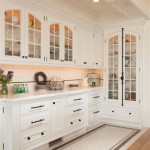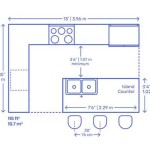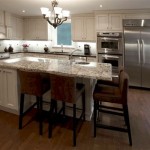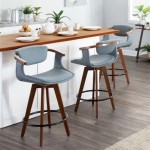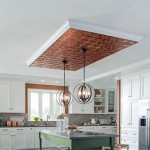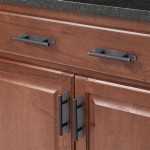Best Kitchen Cabinet Shelf Liners: A Comprehensive Guide
Kitchen cabinet shelf liners are a practical and often overlooked element in maintaining a clean, organized, and protected kitchen space. These liners serve multiple purposes, from preventing scratches and spills to dampening noise and providing a visual upgrade to the interior of cabinets and drawers. The vast array of options available, however, can make selecting the best shelf liner for specific needs a challenging task. This article aims to provide a comprehensive overview of the different types of kitchen cabinet shelf liners, their benefits, and factors to consider when making a purchase.
The primary function of a shelf liner is to protect the underlying surface of the cabinet or drawer. Cabinets, particularly those made from composite materials or painted wood, are susceptible to wear and tear from everyday use. Dishes, pots, pans, and other kitchenware can scratch or chip the surface. Spills of liquids or sticky substances can also cause damage, leading to staining, warping, or even encouraging mold growth. A properly chosen shelf liner provides a barrier against these potential hazards, extending the life and maintaining the appearance of the cabinets.
Beyond protection, shelf liners can also improve the functionality of the kitchen space. Some liners offer a non-slip surface, preventing items from sliding around when drawers are opened or closed. This can be particularly useful for organizing dishes, glassware, and utensils. Additionally, certain types of liners can absorb minor impacts, reducing noise when placing items in the cabinet. This is especially beneficial in households with open-concept kitchens or those sensitive to noise levels.
The aesthetic appeal of shelf liners should not be discounted. While their primary function is practical, they also contribute to the overall appearance of the interior of cabinets. Liners are available in a wide range of colors, patterns, and textures, allowing homeowners to customize the look of their cabinets and drawers. A fresh, clean shelf liner can instantly brighten up a space and create a more organized and inviting environment.
Understanding Different Types of Shelf Liners
The market offers a diverse selection of shelf liners, each with its own unique properties and suitability for different applications. Understanding the characteristics of each type is crucial for making an informed decision. The most common types include non-adhesive, adhesive, grip, and cushioned liners.
Non-adhesive shelf liners are perhaps the most versatile and widely used option. These liners are typically made from plastic, rubber, or foam and are designed to stay in place due to their weight and surface texture. The key advantage of non-adhesive liners is their ease of installation and removal. They can be easily cut to size using scissors or a utility knife and can be repositioned or replaced as needed. This makes them ideal for renters or homeowners who prefer a temporary solution.
The material of non-adhesive liners varies, influencing their durability and properties. Plastic liners are generally inexpensive and easy to clean, but they may lack grip and can be prone to sliding. Rubber liners offer excellent grip and are more resistant to tearing, but they may be more difficult to clean and can sometimes leave a residue over time. Foam liners provide cushioning and noise reduction, but they may be less durable and more susceptible to absorbing spills.
Adhesive shelf liners, as the name suggests, feature an adhesive backing that secures them to the surface of the cabinet or drawer. These liners offer a more permanent solution and are less likely to shift or move around. They are typically made from thicker, more durable materials like vinyl or laminated paper, providing greater protection against scratches and spills. Installation of adhesive liners requires more precision than non-adhesive options, as they can be difficult to remove or reposition without damaging the underlying surface.
The adhesive used in these liners can vary in strength and composition. Some adhesives are designed to be removable, while others are intended for permanent bonding. It is important to carefully consider the type of adhesive before installation, especially on delicate or painted surfaces. Residue from the adhesive can sometimes be left behind when the liner is removed, requiring additional cleaning efforts.
Grip shelf liners are specifically designed to prevent items from sliding around in cabinets and drawers. These liners typically feature a textured surface or a coating of non-slip material, such as rubber or silicone. They are particularly useful for organizing dishes, glassware, and utensils, as they keep items securely in place even when drawers are opened or closed forcefully. Grip liners are available in both non-adhesive and adhesive varieties, offering flexibility in installation options.
The effectiveness of grip liners depends on the quality of the non-slip material and the texture of the surface. Some liners offer a more aggressive grip than others, making them suitable for heavier or more fragile items. It is important to choose a grip liner that is appropriate for the specific items being stored in the cabinet or drawer.
Cushioned shelf liners provide an extra layer of padding and protection for delicate items. These liners are typically made from foam, rubber, or a combination of materials, offering shock absorption and noise reduction. They are particularly useful for storing glassware, china, and other fragile items that are prone to breakage. Cushioned liners are available in both non-adhesive and adhesive varieties, and they can be easily cut to size.
The thickness and density of the cushioning material will affect the level of protection provided. Thicker, denser liners offer greater shock absorption and noise reduction, but they may also take up more space in the cabinet or drawer. It is important to choose a cushioned liner that is appropriate for the specific items being stored and the available space.
Factors to Consider When Choosing Shelf Liners
Selecting the right shelf liner requires careful consideration of several factors, including the type of cabinet or drawer, the items being stored, and the desired level of protection and functionality. Evaluating these factors will help narrow down the options and ensure that the chosen liner meets specific needs.
The type of cabinet or drawer is a primary consideration. For example, wire shelving may require a different type of liner than solid wood shelving. Wire shelves often benefit from liners that provide a solid surface to prevent items from falling through. Adhesive liners may be less suitable for painted or delicate surfaces, as they can cause damage upon removal. Similarly, drawers may require thinner liners to avoid interfering with the closing mechanism.
The items being stored in the cabinet or drawer will also influence the choice of shelf liner. Heavy items, such as pots and pans, may require a more durable liner that can withstand weight and prevent scratches. Fragile items, such as glassware, may benefit from a cushioned liner that provides shock absorption. Items that are prone to spilling, such as liquids or powders, may require a waterproof or stain-resistant liner.
The desired level of protection and functionality is another important factor to consider. If the primary goal is to protect the cabinet surface from scratches and spills, a simple non-adhesive plastic liner may suffice. If the goal is to prevent items from sliding around or reduce noise, a grip or cushioned liner may be more appropriate. Homeowners who prioritize aesthetics may opt for a patterned or colored liner that complements the overall kitchen decor.
Material composition plays a crucial role in durability, cleaning ease, and environmental impact. Choosing a material that aligns with personal preferences and values is essential. Some shelf liners are made from recycled materials, while others are biodegradable or compostable. Considerations regarding VOC (Volatile Organic Compound) emissions should also be taken for health and safety.
Budget constraints are often a deciding factor. Prices for shelf liners can vary significantly depending on the type, material, and brand. It is important to balance the desired features with the available budget. Inexpensive plastic liners may be a cost-effective option for basic protection, while more durable and specialized liners may require a greater investment. Comparing prices from different retailers and considering bulk purchases can help optimize the budget.
Installation and Maintenance of Shelf Liners
Proper installation and maintenance are crucial for maximizing the lifespan and effectiveness of shelf liners. Regardless of the type of liner chosen, following the manufacturer's instructions and adopting good cleaning practices will ensure that the liners continue to provide protection and organization for years to come.
Before installing any shelf liner, it is essential to thoroughly clean the surface of the cabinet or drawer. Remove any debris, dust, or spills and allow the surface to dry completely. This step is particularly important for adhesive liners, as any dirt or moisture can prevent proper adhesion. For non-adhesive liners, a clean surface will help prevent them from slipping or sliding.
Accurate measurement and cutting are crucial for a professional-looking installation. Use a measuring tape to determine the dimensions of the cabinet or drawer and transfer these measurements to the shelf liner. Use scissors or a utility knife to cut the liner to size, ensuring a snug fit. For adhesive liners, it is helpful to peel back a small portion of the backing and gradually adhere the liner to the surface, smoothing out any air bubbles as you go.
Cleaning and maintaining shelf liners is essential for preventing the buildup of spills, stains, and odors. Non-adhesive liners can be easily removed and washed with soap and water. Adhesive liners can be wiped down with a damp cloth and mild detergent. Avoid using abrasive cleaners or harsh chemicals, as these can damage the surface of the liner. Regularly cleaning shelf liners will help maintain a clean and hygienic kitchen environment.
Periodic inspection and replacement of shelf liners are necessary to ensure continued protection and organization. Check the liners regularly for signs of wear and tear, such as rips, tears, or discoloration. Replace any liners that are damaged or no longer providing adequate protection. This will help prevent damage to the underlying cabinet surface and maintain a clean and organized kitchen space.
Proper disposal of old shelf liners is also environmentally responsible. Consider recycling options for plastic or rubber liners, or dispose of them according to local regulations. Choosing shelf liners made from sustainable materials can also reduce the environmental impact of their disposal.

9 Of The Best Shelf Liners For Cabinets Drawers And More

Aisutha Cabinet Liner Non Adhesive Washable 12 Inch X 20 Ft 240 Waterproof Durable Slip Shelf For Kitchen Drawer Refrigerator

Simple Diy Drawer And Shelf Liners

Ask Annie What Are The Best Shelf Liners Live Simply Method

7 Of The Best Shelf Liner Options For 2025 Taste Home

7 Of The Best Shelf Liner Options For 2025 Taste Home
The Best Shelf Liners For Kitchen Cabinets Refrigerators And More

4 Uses For Easyliner Brand Shelf Liner In The Kitchen Duck

Drymate Premium Luxury Shelf Drawer Liner Thick Cushioned Fabric Non Adhesive Absorbent Waterproof Slip Resistant Liners For Kitchen Cabinets

How To Choose The Best Kitchen Shelf Liner 7 Tips Everyday Old House


